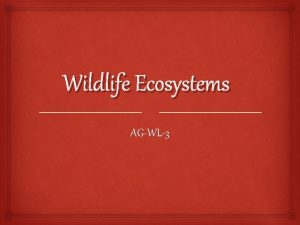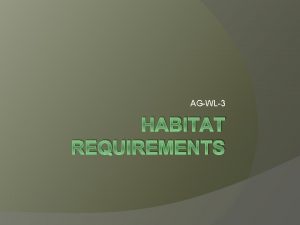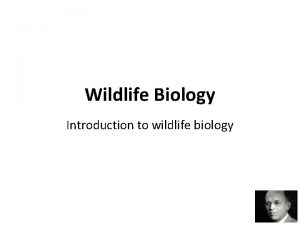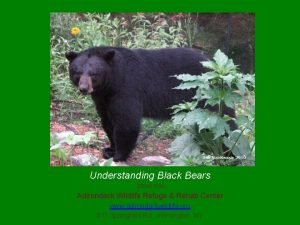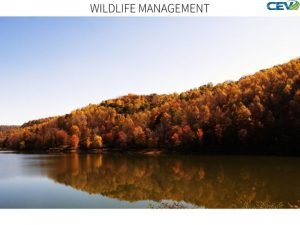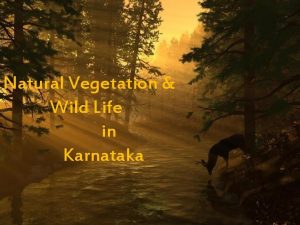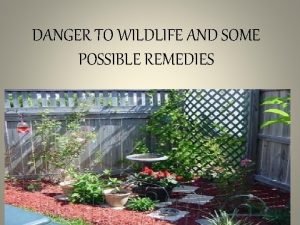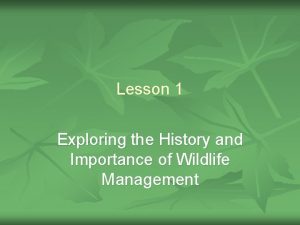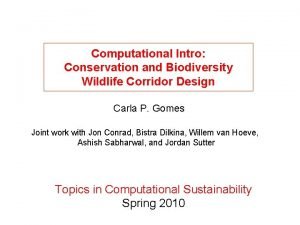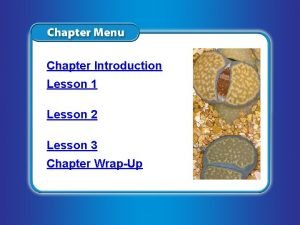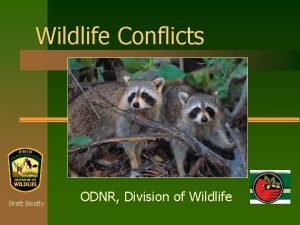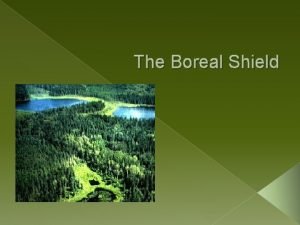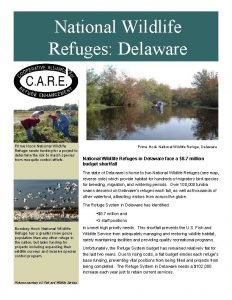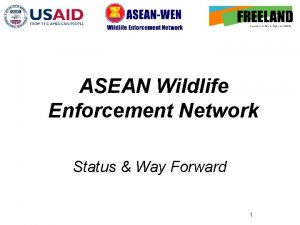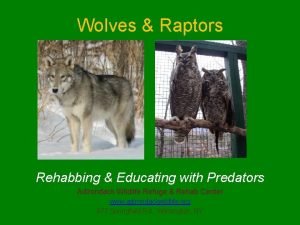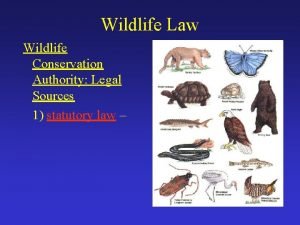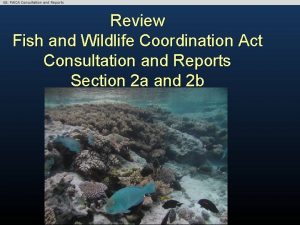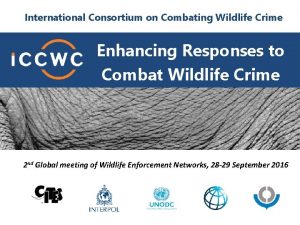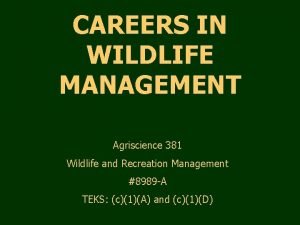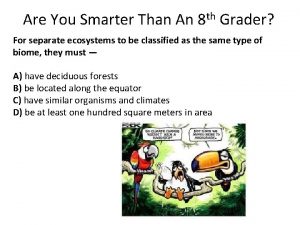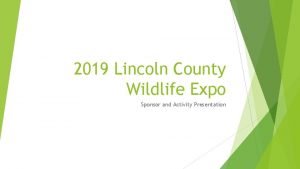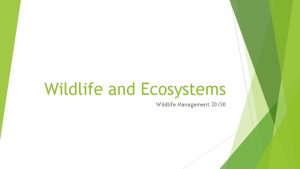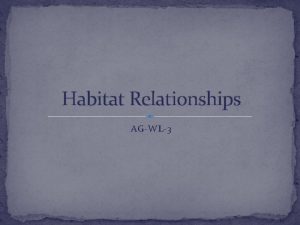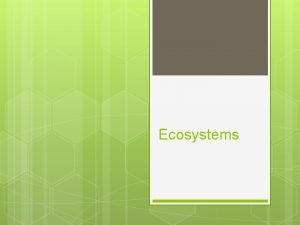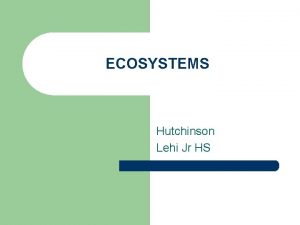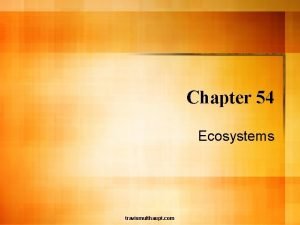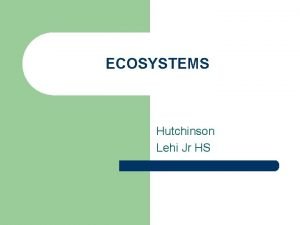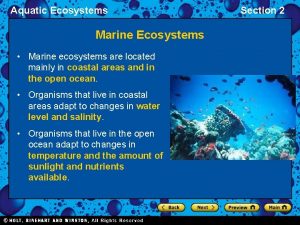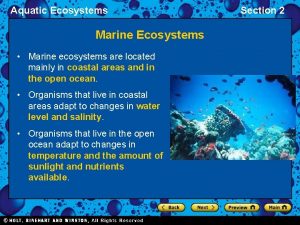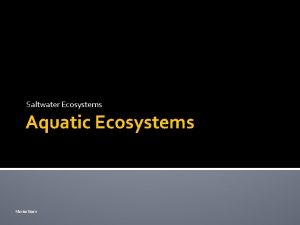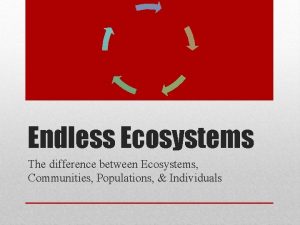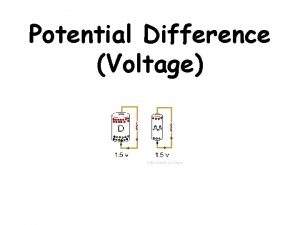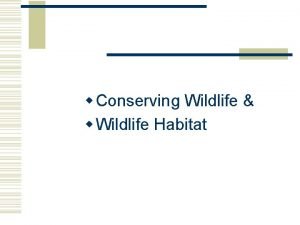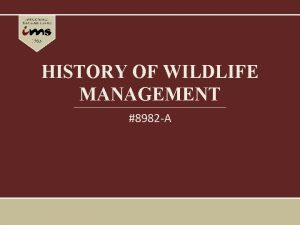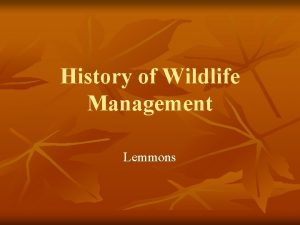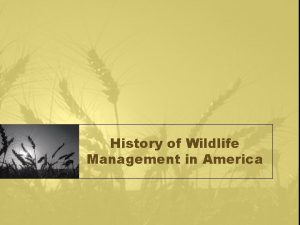Wildlife Ecosystems AGWL3 Whats the difference Whats the




























- Slides: 28

Wildlife Ecosystems AG-WL-3

What’s the difference?

What’s the difference? • What do the pliers look like? • How do the pliers work? • Which pliers would you want to use in a given situation?

What’s the difference? • Ecosystems are similar. • They are described by: • What does it look like? • How does it function? • What value does it have?

What is Ecology? • Study of how living things exist in the environment • Environment consists of living organisms, non-living things, climate, air, water, and land • Explains the roles of organisms in nature • Ecologist – a person that studies ecology

What is an ecosystem? • A community of living and non-living things interacting within their environment • Interactions within an ecosystem are numerous and complex

What is an ecosystem? • Biotic • All living things such as plants, animals, and micro-organisms • Abiotic • Non-living parts of an environment • Organisms cannot survive without abiotic factors • Examples: energy, water, nutrients, and soil

What is an ecosystem? • Ecosystems have no particular size • Dependent on flora and fauna • Flora – plant life • Fauna – animal life • Communities are interdependent (they depend on each other for survival) • Community is a group of organisms living in relative harmony

How are ecosystems organized? Biosphere Biomes Ecology Ecosystems Communities Populations Species

How are ecosystems organized? • • • Biosphere: largest of all ecosystems Biomes: Regional ecosystems Ecosystems are composed of communities Communities encompass populations Groups of organisms form populations

What are the major components of an ecosystem? • Soil • Mixture of weathered rock, minerals, organic matter, and living organisms • Provide nutrients, water, and growing media • Atmosphere • Provides organisms with carbon dioxide for photosynthesis and oxygen for respiration

What are the major components of ecosystems? • Solar Radiation • Used to heat the atmosphere and to evaporate and transpire water • Sunlight is necessary for photosynthesis

What are the major components of ecosystems? • Water • Medium by which mineral nutrients are translocated in plants • Necessary for leaf turgidity and photosynthetic chemical reactions • 6 CO 2 + 6 H 2 O + Solar Energy = C 6 H 12 O 6 + 6 O 2

What are the major components of ecosystems? • Organisms • Three categories of organisms • Producers (Autotrophs) • Consumers (Heterotrophs) • Decomposers or Detrivores

What are the major components of ecosystems? • Producers • Convert energy into food, generally plants • Decomposers or Detrivores • Degrade organic material

What are the major components of ecosystems? • Consumers • Animals, feed on producers • Primary: herbivores (eats plants) • Secondary: carnivores (eats meat) • Tertiary: eats secondary consumers

What types of species are found in ecosystems? • Native species • Normally live and thrive in an ecosystem • Immigrant species • Migrates into an ecosystem, may be introduced by humans

What types of species are found in ecosystems? • Exotic species • An organism that is not native to an environment, but has been introduced from another location • Often the species of focus by researchers and managers

What types of species are found in ecosystems? • Invasive species • Non-native species of plants or animals that outcompete native species in a specific habitat • Alters natural composition of ecosystems

What types of species are found in ecosystems? • Indicator species • Serves as early warning that ecosystem is degrading • Keystone species • Significant role affecting many organisms in an ecosystem • Examples: bumblebee, longleaf pine, beaver, gopher, tortoise

How do species interact in an ecosystem? • Interspecific competition • Competition between species for resources • Predation • Predator feeds on prey • Mutualism • Both participating species benefit • Commensalism • One species benefit, while other organisms are not affected

What is biodiversity? Variation of organisms within a given ecosystem or biome

What are three types of biodiversity? • Genetic diversity – variability in genetic material • • Small populations breeding results in narrow diversity Large populations breeding results in greater diversity Isolating populations to areas limits diversity Genetic deformities are more prevalent when diversity is low

What is biodiversity? • Species diversity – variety and number of different species that share an environment • Available food supply impacts species diversity • Warmer climates often have greater diversity than cooler climates

What is biodiversity? • Environment diversity – variety of species in biological communities and their interaction with non-living elements

How is biodiversity lost? • Habitat loss and fragmentation • Invasive Species • Pollution • Climate Change

How diverse is Georgia? • • Home to 69 terrestrial animals 370 species of birds 163 species of reptiles and amphibians 219 native fish species Approximately 4, 200 aquatic species insects 98 mollusks species More than 3, 600 native wild plants

Basic Ecological Principles: Understanding How the System Works http: //www. clemson. edu/extension/natural_resources/wildli fe/publications/pdfs/fs 5_basic_ecological_principles. pdf
 Agwl3
Agwl3 Agwl3
Agwl3 Manipulative management wildlife
Manipulative management wildlife Adirondack wildlife refuge and rehab center
Adirondack wildlife refuge and rehab center Gdt european wildlife photographer of the year
Gdt european wildlife photographer of the year Objectives of wildlife management
Objectives of wildlife management Karnataka vegetation
Karnataka vegetation Role of wildlife conservation
Role of wildlife conservation Wildlife topics for presentation
Wildlife topics for presentation Basic requirements of wildlife
Basic requirements of wildlife Shillapoo wildlife area
Shillapoo wildlife area History of wildlife conservation
History of wildlife conservation Wildlife corridor design
Wildlife corridor design Wildlife reproduction
Wildlife reproduction Cascade mountains wildlife
Cascade mountains wildlife Odnr division of wildlife
Odnr division of wildlife Boreal shield wildlife
Boreal shield wildlife Spoil wildlife
Spoil wildlife Prime hook national wildlife refuge map
Prime hook national wildlife refuge map Blackwater national wildlife refuge hunting
Blackwater national wildlife refuge hunting Asean wildlife enforcement network
Asean wildlife enforcement network Adirondack wildlife refuge
Adirondack wildlife refuge Wildlife conservation law
Wildlife conservation law Fish and wildlife coordination act
Fish and wildlife coordination act International consortium on combating wildlife crime
International consortium on combating wildlife crime Diane boyd wildlife biologist act answers
Diane boyd wildlife biologist act answers Careers in wildlife management
Careers in wildlife management Wildlife biologist
Wildlife biologist Lincoln county wildlife expo
Lincoln county wildlife expo
